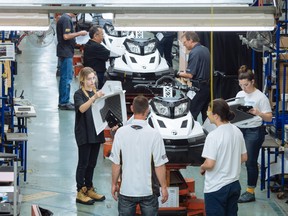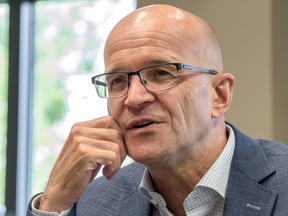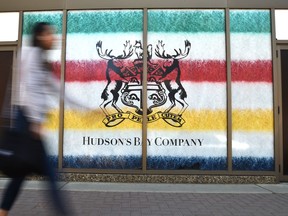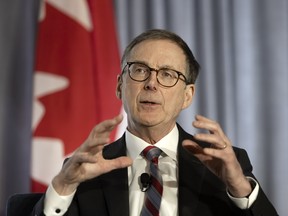Customers tend to be higher-income earners that are less impacted by inflation, José Boisjoli says
Article content
It’s a well-known principle that consumers spend less as the economy slows, particularly on non-essential items.
Canadians, at least, seem to be doing just that. That could be why shares of Valcourt, Que.-based Bombardier Recreational Products Inc. dropped 1.5 per cent on Sept. 7, the same day it reported record second-quarter revenue of $2.8 billion. The products the company sells are arguably non-essential: powersport vehicles such as ATVs, side-by-sides (UTVs), motorcycles, snowmobiles and watercraft.
Advertisement 2
Article content
Article content
“We are reducing our CY24 revenue estimates by seven per cent, taking a more conservative approach by reflecting potential demand softness next year,” Stifel analysts Martin Landry and Mathieu Deneault Gauthier said in a note the same day BRP’s earnings were released.
The analysts said they have already seen a slowdown in the purchase of marine and recreational vehicles, so it would not come as a surprise if the powersport vehicle industry experiences a similar “softness,” or decreasing demand as buyers exit the market.
But BRP chief executive José Boisjoli isn’t worried. BRP’s customers tend to be higher-income earners that are less impacted by inflation, he said on a Sep. 7 call with investors.
This consumer is receptive to BRP’s luxury products such as the Can-Am Maverick R, its most expensive off-road vehicle ever, starting at $43,999, and premium features like a touchscreen colour display and Apple Carplay in all Can-AM Spyder models, which “(improve) the rider experience through innovation,” Martin Ethier, a marketing director, said in an Aug. 20 press release.
Article content
Advertisement 3
Article content
“If the macroeconomic situation remains as it is, we can continue our momentum,” Boisjoli said. “We can do that because … we have a diversified product portfolio.”
Customers also have flexibility in how much they choose to spend at BRP, he said, since the company has a range of products at different price points; a “full offering” for customers of all income levels.
For example, the company offers a snowmobile for around US$7,000, but another at US$20,000; and a side-by-side model at US$15,000, but also at US$45,000, Boisjoli added. Given the range of options, consumers might continue to buy BRP products despite high interest rates and financing costs.

Customers don’t appear to be opting for BRP’s cheaper products, though. Retail sales are up 41 per cent across the board, company spokesperson Mélanie Montplaisir said in an email. This was the company’s strongest second quarter ever, she added.
Even though Canada’s economy is contracting relative to the United States, BRP said its year-to-date sales for the two markets were comparable.
BRP’s product range helps dealers weather economic ups and downs, too.
Advertisement 4
Article content
“When you have a diversified product portfolio and a diversified geographic network, you can balance your risk more,” Boisjoli said. “It’s more stable.”
Similarly, the analysts at Stifel expect BRP investors will see “continued benefits from a healthy product mix.”
But diversification comes with its drawbacks.
“It’s more complex to manage, obviously,” Boisjoli said. “But we’re good at it.”
One of the challenges associated with managing diversified product lines is ensuring the supply chains hold up. BRP has faced supply chain issues in the past, especially during the COVID-19 pandemic, when the company started shipping incomplete products to dealers in order to get products into consumers’ hands faster.
Though the worst of the supply chain issues are over, BRP continues to implement strategies to mitigate similar issues as they come up.
For example, to ensure the company has continued access to microchips, one of the most important components in BRP vehicles, it has divided its microchip supply chains into two categories: generic and non-generic.
Since it is much easier to substitute a generic microchip than a non-generic microchip, the supply chains need to be managed differently, Boisjoli said. BRP keeps a low inventory of the generic microchips, but stocks up on non-generics to make sure it always has them on hand.
Advertisement 5
Article content
“The supply chain is back to normal,” he said. “Suppliers are delivering what they committed to, and the transportation time is normal.”
The stabilized supply chain helped BRP increase its gross profit, a Sept. 7 release said, but this was partially cancelled out by rising interest rates.
-

BRP breaks another revenue record
-

BRP reports revenue surge of 71% to a company record
-

BRP posts best revenue in its history
Despite the inflationary challenges facing the company, the Stifel analysts give BRP a “buy” rating.
“We continue to like BRP and see limited downside for the shares at current levels,” they said.
• Email: mcoulton@postmedia.com
Article content
Recession poses challenges for BRP, but CEO says it can overcome them
2023-09-11 17:09:28






Comments
Postmedia is committed to maintaining a lively but civil forum for discussion and encourage all readers to share their views on our articles. Comments may take up to an hour for moderation before appearing on the site. We ask you to keep your comments relevant and respectful. We have enabled email notifications—you will now receive an email if you receive a reply to your comment, there is an update to a comment thread you follow or if a user you follow comments. Visit our Community Guidelines for more information and details on how to adjust your email settings.
Join the Conversation